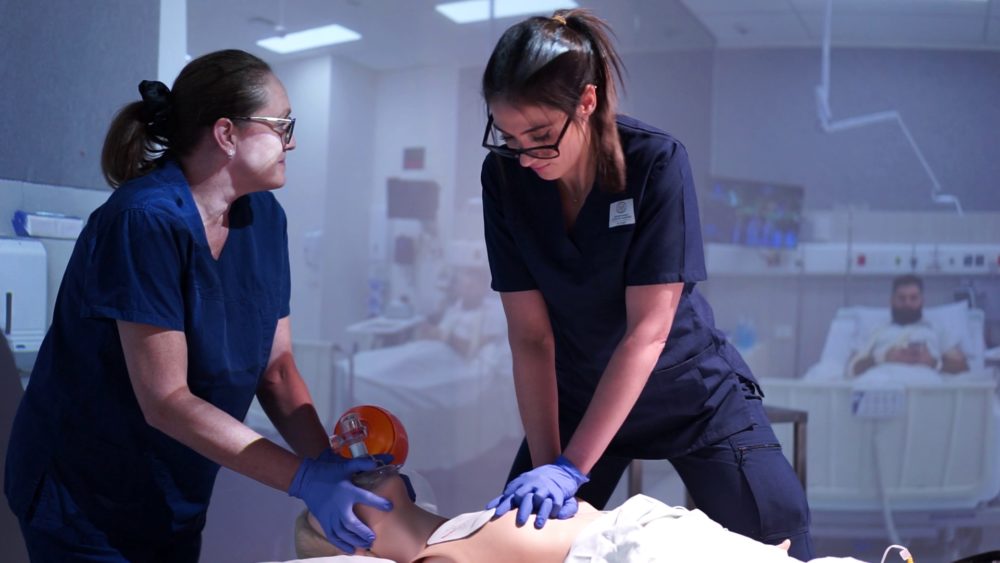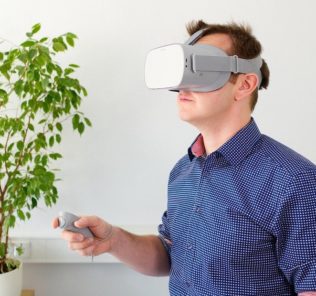Immersive VR Technology Used to Enhance Medical Realism
In an effort to boost engagement and build empathy, the University of Adelaide is installing immersive technology into the school’s cutting-edge medical simulation facilities. Using the Igloo Vision Immersion Room, learners will be able to participate in realistic medical scenarios. This is made possible because the clinical simulation technology is equipped with 360° projection and surround sound.
Picture this. You’re back in university, learning a relatively basic procedure: a joint aspiration. Instead of hearing about the procedure in a lecture or watching a video, you step right into the centre of a bustling hospital ward. In front of you, a physician inspects a patient’s swollen joint. The patient consents, and the physician inserts a needle to drain the fluid for analysis, all of which happens right before your eyes.
Then, it’s your turn. Now you’ve seen the procedure up close, and understand that following suit on your own subject is not so hard. Before long, you’re living the “see one, do one, teach one” mantra. This may sound a little too easy, but this method is one way that immersive technology can vastly improve learning outcomes across healthcare simulation. The technology can help simulation educators teach in a shared immersive space, and design or develop an entire class or individual lesson using virtual reality (VR) headsets or augmented reality (AR) glasses.
Sponsored Content:
Immersive technology offers the chance to simulate as close an experience to the real thing as possible. This means that learners can retain information easier, and better — and gain unique learning experiences they couldn’t have had otherwise. The University of Adelaide is investigating immersive technology for exactly this reason.
The university is one of Australia’s most research-intensive institutions, and is committed to delivering highly-valued research to local and global communities. The facility is equipped with cutting-edge healthcare simulation facilities — and now, has further enhanced them with mixed reality and immersive technology.
This enhancement includes the creation of 10 VR suites equipped with headsets, and the procurement of a 360° camera. This is to obtain wraparound footage from hospital wards. Igloo Vision’s shared immersive technology, the Immersion Room, allows for this 360° projection and surround sound.
“We’re committed to experimenting with, and keeping at the edge of mixed reality and immersion teaching modalities, and the Igloo is perfect for that,” said Director of Adelaide Health Simulation Adam Montagu. “It’s been our goal to transport any student to any destination in Australia — perhaps a rural environment or a hospital area they might find it hard to access. We’re able to recreate that within our simulation lab with 360° video and immersion, and they can walk in and really feel like they’re there.”
Sponsored Content:
Ultimately, since opening in early 2020, the Immersion Room at the University of Adelaide has been used for:
- Simulating patients in hospital wards and accident sites for students to gain hands-on experience;
- Viewing 360° films following medical procedures in-context, all the way from a patient giving consent to the follow-up;
- Immersive storytelling for students to experience the narratives of patients and their loved ones coping with critical illness or disease;
- Remote learning through COVID-19 lockdowns by providing a virtual lecture theatre environment.
Furthermore, this immersive technology has brought the university success in:
- Delivering higher levels of engagement and understanding among learners;
- Building empathy among students with immersive experiences;
Dealing with the COVID-19 crisis by offering a virtual classroom environment for medical simulation; - Creating a bank of immersive content that can be used to support the learning of students for many years to come.
The Immersion Room came into use during the very first COVID-19 lockdown. Worldwide, academics were struggling to teach and keep learners engaged through remote video calls. The university found another benefit of immersive technology was being able to create a hybrid space for webinars and meetings. With this technology, staff members could demonstrate medical procedures from the simulation centre of the Immersion Room and use the 360° screen behind them for presentations, live polls, or even videos to give the illusion of demonstrating live from a hospital ward.
In front of them, the staff could see their learners in a montage of life-size faces. They could then better ensure that learners understood the subject material as they went along. Both staff and learners developed a real sense of presence with authentic interaction and rapport. The new 360° camera also enabled the university to access hospital environments and film medical procedures, such as joint aspirations. Learners could view every step of the procedure in full context, from the consenting process to the follow-up, in life-size around them.
The university has investigated how to build empathy and understanding of disease and illness through immersive storytelling. In its first use, this involved interviewing and following the journeys of patients with dementia and their families. This formed an incredibly powerful immersive experience.
Today, the University of Adelaide continues to find new and innovative uses for the Immersion Room. Immersive technology has become integral to the facility’s healthcare simulation program, and to educational opportunities for learners. Content is being created as part of a long-term plan and will be useful for years to come.
“In summary, we’re incredibly happy with [the Immersion Room],” Adam concluded. “It’s an emerging technology and we’re happy to be on that learning curve. Our students are enjoying it and our academics are excited by it.”
More About Igloo Vision
Igloo Vision is a shared immersive space company that creates immersive environments anyone can use. For over a decade, the company has been sharing immersive spaces with hundreds of clients all over the world, across all industries. Based in the United Kingdom, United States, Canada and Australia, Igloo Vision takes any digital content and puts the material in an immersive space.
The company can design, develop and deliver immersive domes, cylinders, workspaces, custom-builds, and the Igloo Immersive Media Player that powers them all. Igloo Vision has developed a full suite of software that makes engaging with any immersive content simple. This helps users overcome the solitary nature of a VR headset and can share the immersion with whole groups.
Learn More About Immersion Room
Today’s article was guest authored by Colin Yellowley, R&D Director at Igloo Vision.
Have a story to share with the global healthcare simulation community? Submit your simulation news and resources here!
Lance Baily, BA, EMT-B, is the Founder / CEO of HealthySimulation.com, which he started in 2010 while serving as the Director of the Nevada System of Higher Education’s Clinical Simulation Center of Las Vegas. Lance also founded SimGHOSTS.org, the world’s only non-profit organization dedicated to supporting professionals operating healthcare simulation technologies. His co-edited Book: “Comprehensive Healthcare Simulation: Operations, Technology, and Innovative Practice” is cited as a key source for professional certification in the industry. Lance’s background also includes serving as a Simulation Technology Specialist for the LA Community College District, EMS fire fighting, Hollywood movie production, rescue diving, and global travel. He and his wife live with their two brilliant daughters and one crazy dachshund in Las Vegas, Nevada.
Sponsored Content:
















